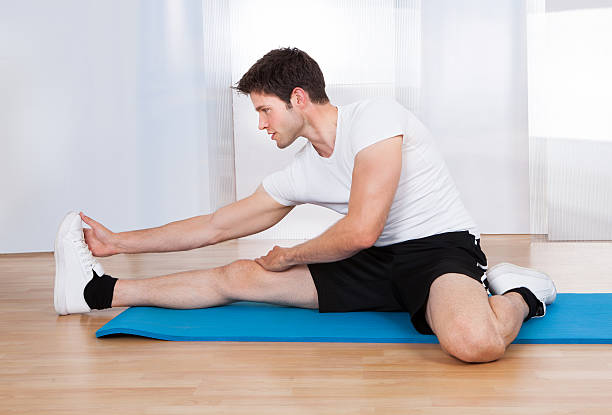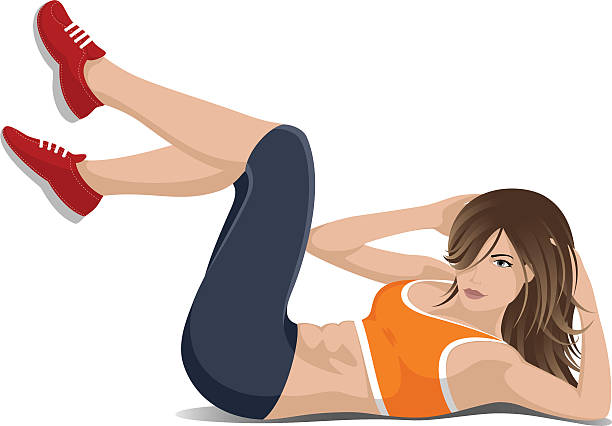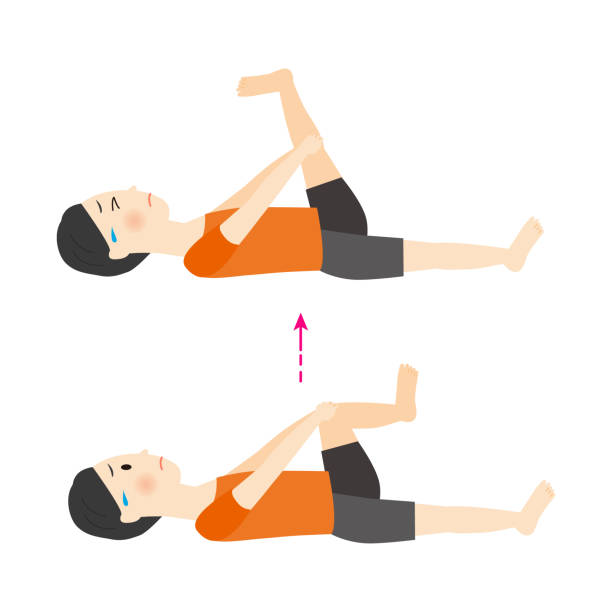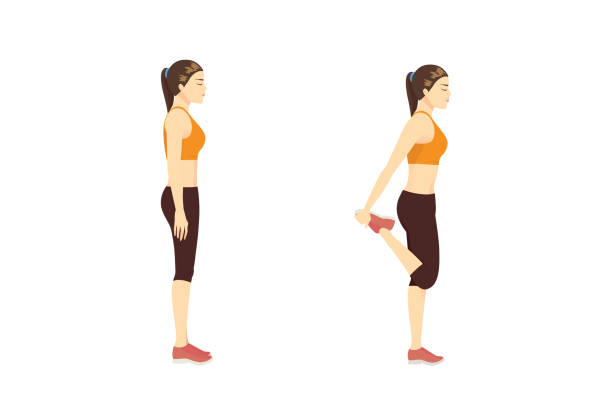
In this post, we will discuss something important for your knees – flexion exercises! These exercises can help improve your knee’s range of motion, which is how much you can bend and how much knee flexion straighten your knee. It’s like doing stretches for your knees but with a bit more movement involved. So, let’s jump right in and learn more about why knee flexion is so important and how you can do these exercises!
The Importance of Knee Flexion:
Knee flexion is super crucial for your mobility. Think about all the things you do that involve bending your knees – walking, running, jumping, even sitting down or standing up from a chair! All of these activities require your knees to bend. So, if your knee flexion is limited, it can make it hard for you to do these things.

Why is Improving Knee Flexion After Surgery Important?
Now, let’s discuss why improving knee flexion after surgery is important. When you have knee surgery, like a knee replacement or repairing a torn ligament, it can affect the range of motion in your affected knee part. This means that after the surgery, your knee might not be able to bend or straighten as well as it used to. That’s where knee flexion exercises come in!
By doing these exercises, you can help your knee regain its full range of motion. This will not only help you move better, but it will also speed up your recovery! Plus, if you don’t work on improving your knee flexion after surgery, it can lead to long-term stiffness knee pain in your knee. And trust me; nobody wants a stiff knee!
Knee Flexion Range of Motion Exercises:

1) Seated Knee Flexion:
As the name suggests, this exercise requires being seated and can be done with or without resistance bands. Sit with your feet flat on the floor. Lift one leg straight out in front of you. Slowly lower your foot to the floor, then lift your knee again. Repeat this movement 10 to 12 times before switching legs. For resistance band training, wrap a band around your foot, and anchor the other end to a table leg or a post. Repeat the same motion as above.

2) Supine Knee Flexion:
Lie down on your back with both feet flat on the floor. Flex one knee and bring it toward your chest, then release and return it to the starting position. You can use a strap or towel around your ankle to aid in lifting your leg. If you prefer, you can add light weights or resistance bands to this exercise for better results.
3) Wall Slides:
Lean against a wall and lower yourself until your buttocks are the same height as your knees. Bend your knees slightly as you slide your back down the wall until your legs form a 90-degree angle. Hold this position for 5 to 10 seconds, then slide your legs straight and back up to the top.

4) Quadriceps Stretch:
To do this exercise:
- Stand near a wall or a chair for support.
- Hold your ankle or toes with one hand, then gently pull your foot towards your buttocks to feel the stretch in your quadriceps muscle.
- Hold this position for 5 to 10 seconds before releasing.
5) Lying Hamstring Curls:
Lie on your stomach with your hands by your sides, slowly bend your knee at a 90-degree angle and slowly brings your heels towards your buttocks. Hold this position for 5 to 10 counts and lower your legs to the starting position. Repeat the same motion 10 to 12 times.

Heel and Calf Raises:
One exercise you can try is called heel and calf raises. These exercises are great for strengthening your calf left heel muscles and improving knee flexion.
How do you do them? Stand up straight, then rise onto your tiptoes as high as possible. Hold for a few seconds, then slowly lower your heels to the ground. You can repeat this motion 10-15 times to get a good workout for your calves and knees.
Knee Flexion (Standing):
Another exercise you can try is the standing knee flexion exercise. This exercise helps to strengthen the muscles in the back of your leg, hamstring muscles which are important for knee flexion.
To do this exercise, stand up straight and lift your foot off the ground, bending your knee as much as possible. Hold for a few seconds, and then slowly lower your knee swelling put your foot back down. You can repeat this exercise with both legs about 10-15 times.
Knee Flexion After Surgery Exercises:
Now, let’s talk about knee flexion exercises that you can do after surgery. It’s important to note that after surgery, you should always follow your doctor’s instructions and only do safe and appropriate exercises for the rest of your recovery.
One knee joint for exercise you can try is the seated knee flexion exercise. This exercise is great for improving knee flexion and can be done while sitting down.
To do this exercise:
- Sit on a chair with your feet flat on the ground.
- Slowly slide your foot backwards, bending your knee as much as possible. You can use your other leg to gently assist in bending the knee further.
- Hold for a few seconds, then slowly slide your foot back to the starting position.
- Repeat this exercise about 10-15 times.

Why Is Exercise to Strengthen Your Knees Importantly?
Now, let’s move forward and talk about why exercise to strengthen your knees is important. When you strengthen your knees, you’re not only helping to improve knee flexion, but you’re also reducing the risk of knee injuries. Strong knee muscles can support your knees and absorb the impact of activities like running or jumping.
Strengthening your knees can also help with other body areas, like your hips and ankles. When all of these muscles work together, it can improve your balance and stability. Plus, having strong knees can also boost your overall health and fitness!
Seated Knee Flexion Exercise After Knee Surgery – PROM, Other Leg Assist:
Another exercise you can try after knee surgery is a seated knee flexion exercise using PROM (Passive Range of Motion) or other leg assist methods. These exercises are great for the pain by gradually increasing knee flexion while relaxing your muscles.
To do this exercise:
- Sit on a chair with your feet flat on the ground.
- Gently lift your foot off the ground, using your other hand or a strap to assist in bending your knee as much as possible.
- Hold for a few seconds, and then slowly lower your foot back down.
- Repeat this exercise about 10-15 times.
Sitting Unsupported Knee Bends:
Now, let’s talk about sitting unsupported knee bends. These exercises are great for improving knee flexion while sitting down. Just make sure you have a sturdy chair or surface to sit on!
To do this exercise:
- Sit on a chair with your feet flat on the ground.
- Slowly slide your foot backwards, bending your knee as much as possible. You can use your other leg for support, but try to do most of the work with the knee you’re exercising.
- Hold for a few seconds, then slowly slide your foot back to the starting position.
- Repeat this exercise about 10-15 times.

Seated Knee Flexion Exercise – AAROM With A Strap:
Another seated knee and hip flexion exercise with a strap is the AAROM (Active Assisted Range of Motion) method. This exercise is great for gradually increasing knee flexion and can be done while sitting down.
To do this exercise:
- Sit on a chair with your feet flat on the ground.
- Put a strap or towel around your foot, holding onto both ends.
- Pull the strap or towel to bend your knee as much as possible.
- Hold for a few seconds, then slowly release the tension to straighten your knee.
- Repeat this exercise about 10-15 times.
Knee Exercises with Resistance:
Let’s talk about knee exercises with resistance. Resistance training is great for strengthening your knees and thigh muscles and improving knee flexion.
One exercise you can try is called wall squats. To do this exercise:
- Stand with your back against a wall and slowly slide down, bending your knees until they’re at a 90-degree angle.
- Hold for a few seconds, then slowly slide back to the starting position.
- Repeat this exercise about 10-15 times.
Body On Knee Flexion PROM:
Last, let’s talk about the body on knee flexion PROM. This exercise involves using your upper body and weight to gently push your knee into flexion.
To do this exercise:
- Lie on your stomach with a pillow or cushion under your hips.
- Keep your leg straight and lift it off the ground, letting it hang off the bed or table.
- Gently push down on your thigh to bend your knee as much as possible.
- Hold for a few seconds, then slowly release the tension to straighten your knee.
- Repeat this exercise about 10-15 times.
Conclusion:
So there you have it, a beginner’s guide to knee flexion exercises! Improving your knee’s range of motion is crucial for mobility and recovery after surgery. Remember to always follow your doctor’s instructions and only do safe and appropriate knee extension and exercises for your recovery.
By doing these exercises, like heel and calf raises, standing knee flexion, seated back flexion exercises for knee back flexion, and using resistance, you can improve your knee’s range of motion and strengthen the muscles around it. And the best part? These exercises can be done right at home with little to no equipment!


Leave a Reply